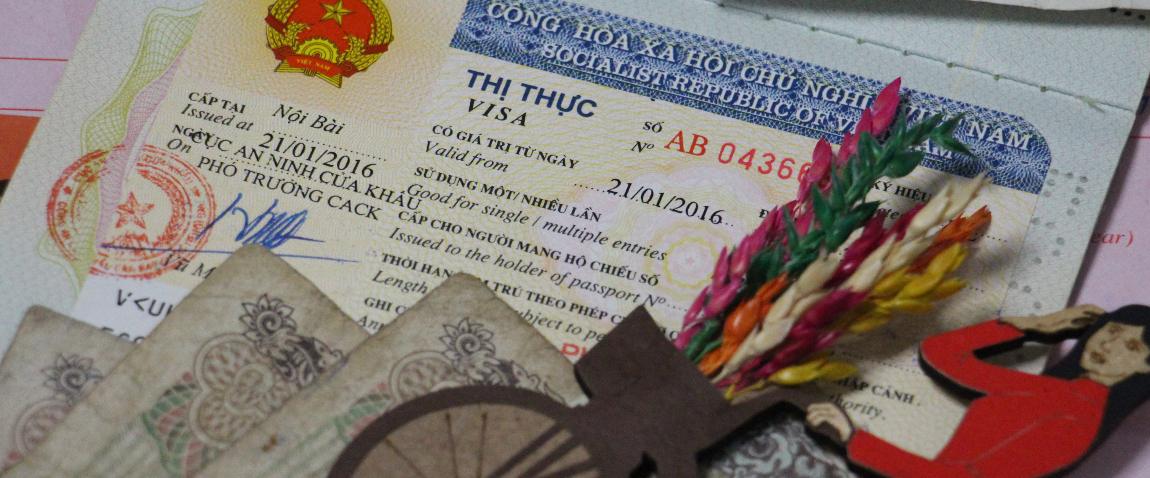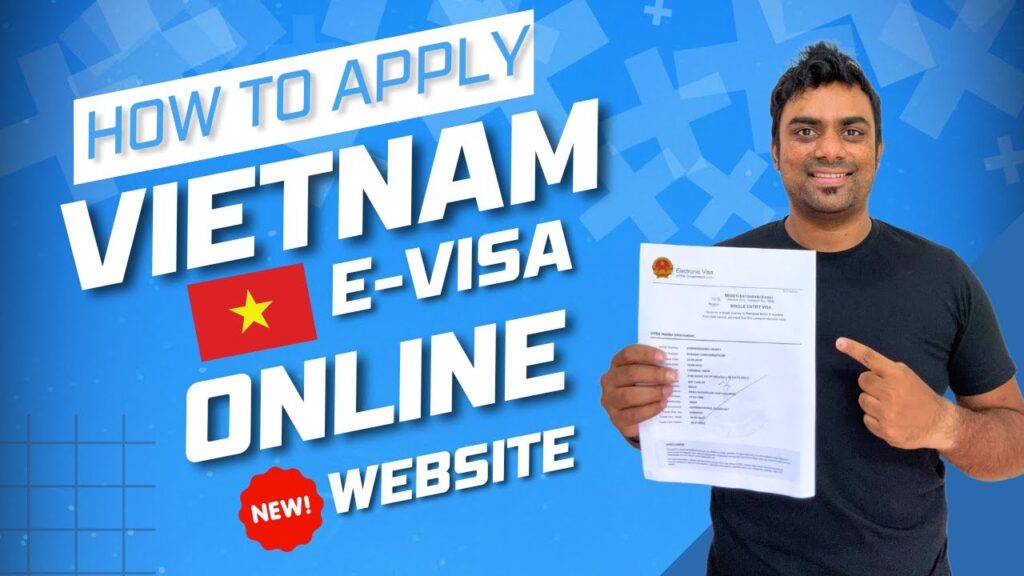Vietnam is a stunning country known for its breathtaking landscapes, rich culture, and delicious cuisine. It’s no wonder that millions of tourists flock to Vietnam every year to explore its beauty. However, before you can embark on your adventure, you need to obtain a tourist visa. In this article, we’ll guide you through the process of getting a tourist visa for Vietnam.
Who Needs a Tourist Visa for Vietnam?
Citizens of certain countries are exempt from obtaining a visa when visiting Vietnam for short periods. However, if you’re not a citizen of one of these countries, you’ll need a tourist visa to enter Vietnam. Here’s a list of countries whose citizens do not need a visa for short stays in Vietnam:
- Brunei Darussalam
- Cambodia
- Indonesia
- Kyrgyzstan
- Laos
- Malaysia
- Singapore
- Thailand
If you’re not a citizen of any of the above countries, keep reading to find out how to get a tourist visa for Vietnam.

What Is a Vietnamese Tourist Visa?
A tourist visa for Vietnam is a type of visa that allows foreign visitors to enter and stay in Vietnam for tourism purposes. Tourist visas are valid for up to 30 days and can be extended for an additional 30 days once you’re in Vietnam.
There are two types of tourist visas available: single-entry and multiple-entry. A single-entry visa allows you to enter Vietnam once, while a multiple-entry visa allows you to enter and exit Vietnam multiple times within a specified period.
When Should You Apply for a Vietnamese Tourist Visa?
You should apply for a tourist visa for Vietnam as soon as you’ve planned your trip. You can apply for a tourist visa up to six months before your intended travel date. However, we recommend applying for your visa at least one month before you plan to travel. This will give you enough time to gather all the necessary documents and complete the application process.

How to Get a Tourist Visa for Vietnam
There are two ways to obtain a tourist visa for Vietnam: through a Vietnamese embassy or consulate in your country or through an online visa service.
Applying for a Tourist Visa Through a Vietnamese Embassy or Consulate
To apply for a tourist visa through a Vietnamese embassy or consulate in your country, follow these steps:
- Visit the website of the Vietnamese embassy or consulate in your country to download the visa application form.
- Fill out the application form and attach a passport-sized photo.
- Submit the application form, along with your passport, to the Vietnamese embassy or consulate in your country.
- Pay the visa fee (the fee varies depending on the country you’re applying from).
The processing time for a tourist visa through a Vietnamese embassy or consulate is usually five to seven working days. However, it’s recommended that you contact the embassy or consulate beforehand to confirm the processing time.
Applying for a Tourist Visa Through an Online Visa Service
To apply for a tourist visa through an online visa service, follow these steps:
- Visit the website of a reputable online visa service provider.
- Fill out the online visa application form.
- Pay the visa fee (the fee varies depending on the type of visa you’re applying for).
- Wait for the visa approval letter to arrive via email (this usually takes two to three working days).
- Print the visa approval letter and bring it with you when you travel to Vietnam.
- Upon arrival in Vietnam, present the visa approval letter at the airport immigration desk and pay the stamping fee (25 USD for a single-entry visa and 50 USD for a multiple-entry visa).
Using an online visa service is a convenient way to obtain a tourist visa for Vietnam. However, be sure to use a reputable provider to avoid scams and frauds.

Pros and Cons of Applying for a Tourist Visa Through an Embassy or Online Visa Service
Here are some pros and cons of applying for a tourist visa through an embassy or online visa service:
Pros of Applying for a Tourist Visa Through an Embassy
- You can receive the visa stamp before your trip.
- You can ask for help from staff at the embassy if you have any questions or concerns.
- The processing time is usually faster than with an online visa service.
Cons of Applying for a Tourist Visa Through an Embassy
- You may need to travel to the embassy or consulate in person to submit your application.
- The process can be more time-consuming and complex.
- The visa fee may be higher than with an online visa service.
Pros of Applying for a Tourist Visa Through an Online Visa Service
- You can apply for the visa from the comfort of your own home.
- The process is usually faster and more straightforward than with an embassy.
- The visa fee is often lower than with an embassy.
Cons of Applying for a Tourist VisaThrough an Online Visa Service
- You cannot receive the actual visa stamp until you arrive in Vietnam.
- There is a risk of scams and frauds if you do not use a reputable online visa service.
- Some online visa services may charge additional fees or hidden costs.
When deciding which method to use, consider your personal preferences, travel itinerary, and budget.
Alternatives to a Tourist Visa for Vietnam
If you’re not eligible for a tourist visa for Vietnam, there are some alternatives you can consider:
- Visa on arrival: This is a type of visa that allows you to obtain a visa stamp upon arrival at one of Vietnam’s international airports. To get a visa on arrival, you need to apply through an online visa service and receive a visa approval letter via email before your trip. Once you arrive in Vietnam, you’ll need to present the visa approval letter at the airport immigration desk and pay the stamping fee.
- E-visa: This is an electronic visa that allows you to enter Vietnam for up to 30 days for tourism purposes. You can apply for an e-visa online through the official website of the Vietnamese government. The processing time is usually three working days, and the fee is 25 USD.
Both visa on arrival and e-visa have their pros and cons, so be sure to research them thoroughly before deciding which option to choose.

Step-by-Step Guide: How to Apply for an E-Visa for Vietnam
If you decide to apply for an e-visa for Vietnam, follow these steps:
- Visit the official website of the Vietnamese government’s immigration department.
- Fill out the online application form.
- Upload a passport-sized photo and a scanned copy of your passport (the passport must be valid for at least six months from your intended travel date).
- Pay the visa fee (25 USD).
- Wait for the visa approval letter to arrive via email (this usually takes three working days).
- Print the visa approval letter and bring it with you when you travel to Vietnam.
- Upon arrival in Vietnam, present the visa approval letter at the airport immigration desk and pay the stamping fee (25 USD).
Comparison: Tourist Visa vs. Visa on Arrival vs. E-Visa
Here’s a comparison of tourist visa, visa on arrival, and e-visa for Vietnam:
| Tourist visa | Visa on arrival | E-visa | |
|---|---|---|---|
| Application process | Embassy or online visa service | Online visa service | Official website of Vietnamese government |
| Processing time | 5-7 working days | 2-3 working days | 3 working days |
| Validity | Up to 30 days | Up to 90 days | Up to 30 days |
| Entry type | Single-entry or multiple-entry | Single-entry or multiple-entry | Single-entry |
| Fee | Varies depending on country and method of application | Visa approval letter fee (between 15-50 USD) + stamping fee (25 USD for single-entry and 50 USD for multiple-entry) | 25 USD |
| Eligibility | Citizens of certain countries are exempt | All foreign visitors | All foreign visitors |
| Additional requirements | None | Visa approval letter | Passport-sized photo and scanned copy of passport |
Consider the differences between these types of visas to choose the one that best suits your needs.
Tips for Getting a Tourist Visa for Vietnam
Here are some tips to help you get a tourist visa for Vietnam:
- Apply for your visa as soon as possible to avoid any last-minute delays.
- Research the requirements for your specific country of origin to ensure you have all necessary documents.
- Use a reputable online visa service if applying online.
- Keep your passport valid for at least six months from your intended travel date.
- Make sure to have enough cash in USD to pay the stamping fee upon arrival.
- Double-check all information on your application form before submitting it.

The Best Option for You
The best option for you depends on your personal preferences, needs, and budget. If you prefer a more traditional method of application, apply for a tourist visa through a Vietnamese embassy or consulate in your country. If you want a faster and more convenient option, consider applying for a visa on arrival or an e-visa.
No matter which option you choose, make sure to research and prepare thoroughly before your trip.
Conclusion
Obtaining a tourist visa for Vietnam is a necessary step for most foreign visitors. Whether you apply through an embassy, an online visa service, or an official government website, understanding the requirements and processes can make the experience much smoother. Remember to plan ahead, double-check your application, and be prepared to pay the visa fee upon arrival. With the right preparation and knowledge, you’ll be able to enjoy all the beauty and culture that Vietnam has to offer.
FAQs
- Do I need a tourist visa to visit Vietnam?
Most foreign visitors need a tourist visa to enter Vietnam, although citizens of some countries are exempt.
- How long does it take to get a tourist visa for Vietnam?
The processing time varies depending on the method of application. Embassy applications usually take 5-7 working days, while online applications can take as little as 2-3 working days.
- Can I extend my tourist visa once I’m in Vietnam?
Yes, you can apply for a visa extension through a Vietnamese immigration office. However, this process can be time-consuming and may require additional documents.
- Is it safe to use an online visa service to apply for a visa on arrival?
As with any online service, there is a risk of scams and frauds. To avoid this, choose a reputable and well-reviewed online visa service.
- Can I apply for an e-visa if I plan to stay in Vietnam for more than 30 days?
No, e-visas are only valid for up to 30 days. If you plan to stay longer, you’ll need to apply for a different type of visa or extend your existing visa.





